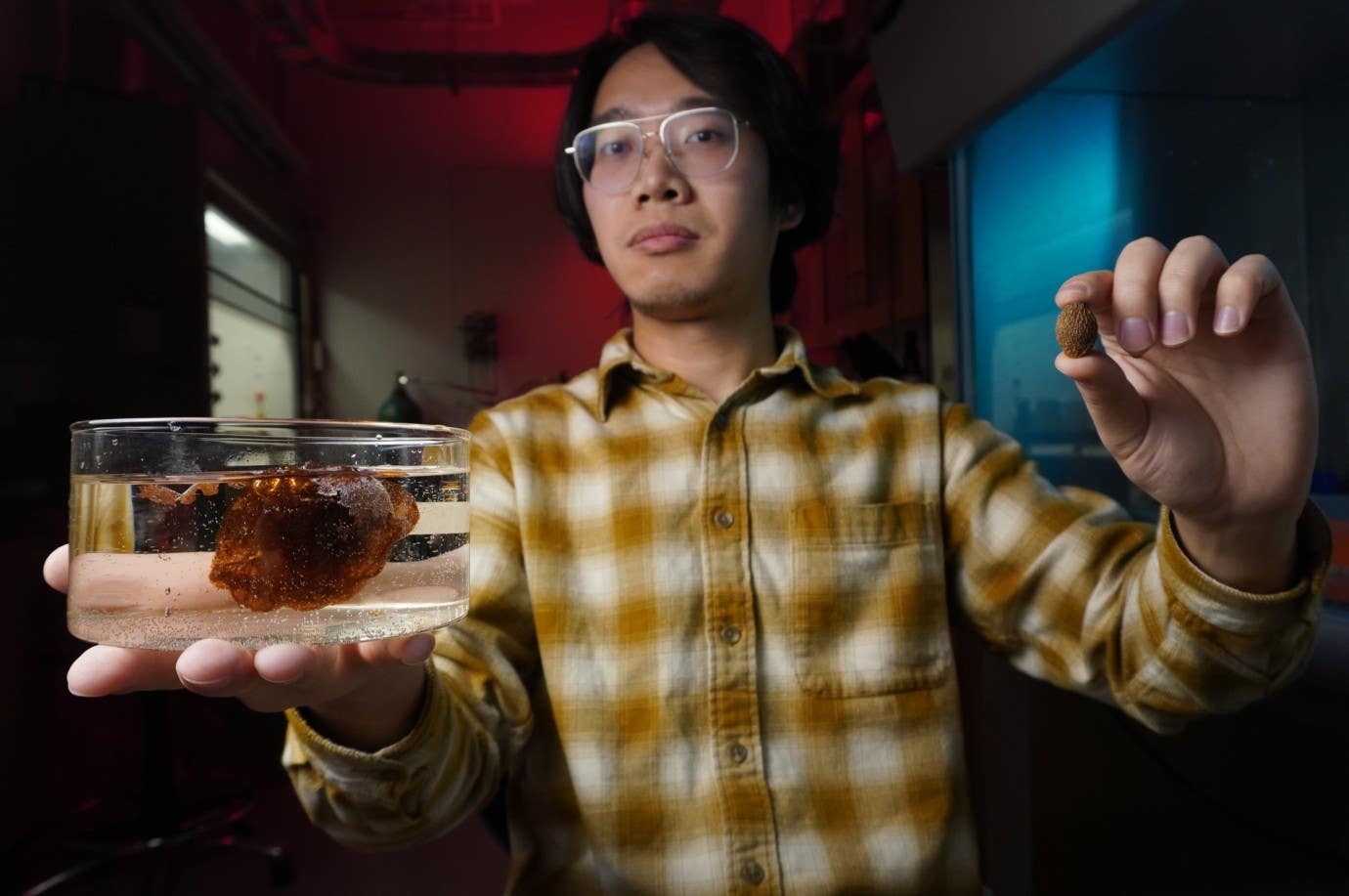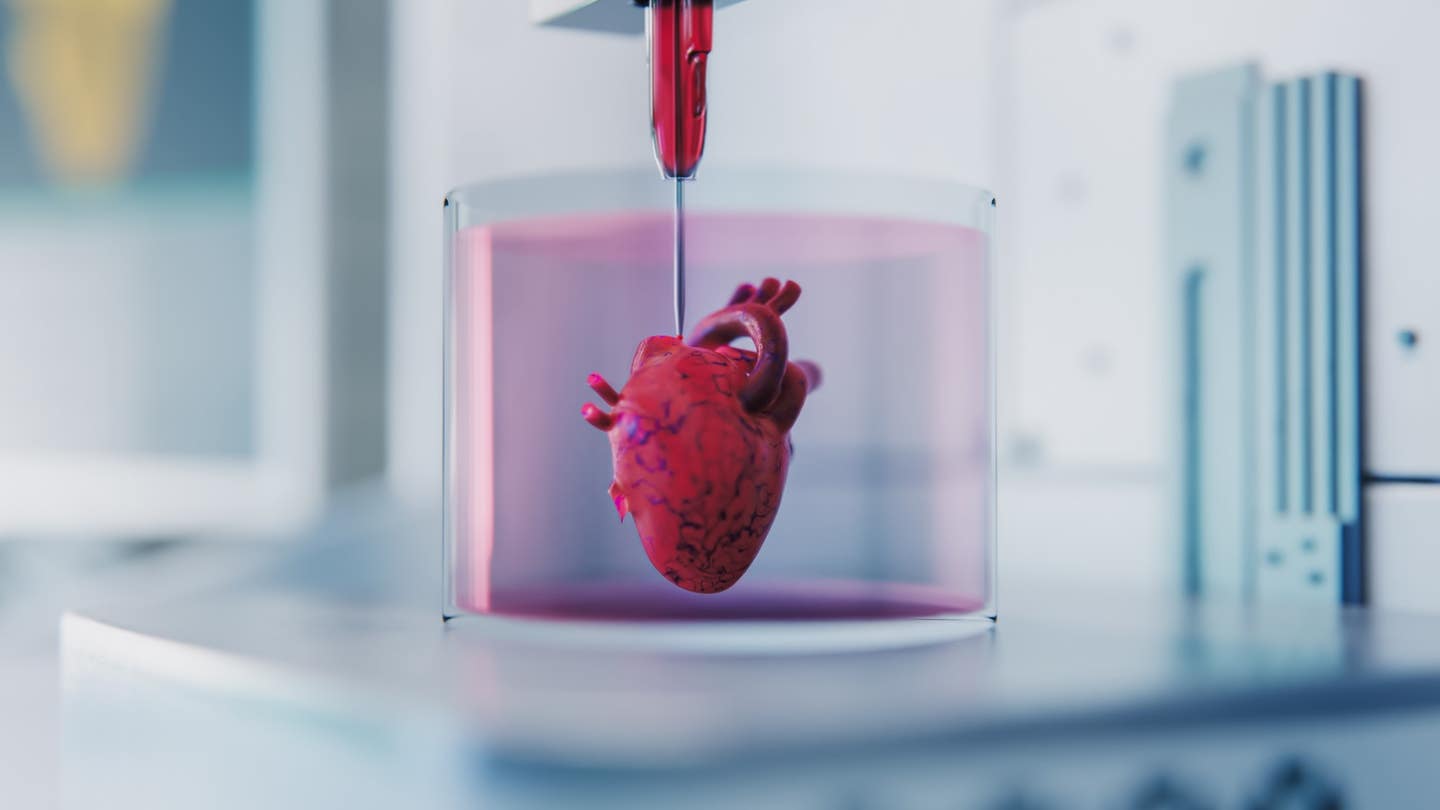Common ingredient in herbal tea revolutionizes wound care and biomonitoring
Scientists turn Malva nut waste into a medical hydrogel for wound healing and ECG monitoring, offering an eco-friendly alternative to synthetic materials.

A common tea ingredient is now a medical marvel. Researchers transformed Malva nut waste into a hydrogel for wound care and ECG monitoring. (CREDIT: University of Chicago / Chuanwang Yang)
A common ingredient in herbal tea has become a groundbreaking medical material in new research from the University of Chicago.
The malva nut, long valued in traditional Chinese medicine, has now proven to be an unexpected source of biomedical innovation. By transforming its gelatinous husk into a hydrogel, researchers have opened new doors for healthcare applications ranging from wound healing to advanced electrocardiography (ECG) monitoring.
A study published in Matter details how this hydrogel, derived from the fruit of the Malva nut tree (Sterculia lychnophora Hance), outperforms commercial ECG patches and accelerates tissue repair. The process, which avoids harsh chemicals, highlights an eco-friendly approach to repurposing plant-based waste into valuable medical resources.
Changxu Sun, a PhD student at the Pritzker School of Molecular Engineering, spearheaded the research with a simple but powerful observation. “You never saw the fruit from a tree expand in that kind of volume,” Sun said, recalling how the nut’s unique swelling behavior caught his attention.
His advisor, Professor Bozhi Tian, praised the ingenuity behind the project. “Changxu looked at herbal tea and saw a world of sustainable biomedical applications ready to be built,” he said.
The Science Behind the Swelling
In traditional Chinese medicine, the malva nut—also called Pangdahai—is a natural remedy for sore throats. When steeped in hot water, the small, dry nut swells dramatically, growing to nearly eight times its original size and absorbing up to 20 times its weight in water. The transformation leaves behind a soft, jelly-like mass that is usually discarded.
For comparison, rice swells about threefold when cooked, while chia seeds absorb roughly ten times their weight in water. The malva nut's ability to expand surpasses both, making it a standout natural hydrogel.
Recognizing its potential, Sun and his team set out to refine and enhance the nut’s polysaccharide-rich husk. By breaking it down, purifying it, and modifying its structure, they developed a medical-grade hydrogel with superior properties.
Related Stories
“We said, ‘Okay, that's a natural hydrogel,’” Sun explained.
A Soft Yet Strong Medical Tool
Hydrogels are widely used in healthcare because of their ability to retain moisture, mimic soft tissue, and interact safely with the human body. They are essential in wound dressings, drug delivery, biosensors, and implantable devices. However, many synthetic hydrogels rely on chemical crosslinking agents, which can be expensive and pose biocompatibility concerns.
The malva nut hydrogel is different. The team extracted its polysaccharides through a chemical-free process and used electrostatic crosslinking with chitosan to enhance its mechanical properties. The result was a strong yet flexible material that adhered well to human skin and supported tissue healing.
“We found it demonstrated superior performance and qualities compared to commercial ECG patches,” Sun said.
The hydrogel was tested as a skin-friendly interface for ECG monitoring, a critical tool for diagnosing heart conditions. Integrated into a 16-channel mesh electronic device, the material provided stable signals even when applied directly to a beating heart.
Its performance surpassed traditional ECG patches, offering a higher signal-to-noise ratio and greater comfort for patients. The findings suggest that naturally derived hydrogels could replace existing synthetic materials in many biomedical applications.
A Sustainable Future for Medicine
Beyond its medical benefits, this hydrogel offers a sustainable way to repurpose plant waste. The Malva nut tree grows primarily in Southeast Asia, where healthcare resources are often limited. By transforming a readily available plant into a valuable medical material, the research team hopes to provide both economic and healthcare benefits to the region.
“These are low-income countries. Their healthcare systems are always limited by a lack of resources,” Sun said. “Here we have a local, native material that can be used to create valuable healthcare solutions while providing these impoverished areas some economic stability.”
This study underscores the potential of natural materials in medicine. What was once tea waste now stands as a versatile, eco-friendly medical tool—proving that innovation often lies in the most unexpected places.
Note: Materials provided above by The Brighter Side of News. Content may be edited for style and length.
Like these kind of feel good stories? Get The Brighter Side of News' newsletter.
Joshua Shavit
Science & Technology Writer | AI and Robotics Reporter
Joshua Shavit is a Los Angeles-based science and technology writer with a passion for exploring the breakthroughs shaping the future. As a contributor to The Brighter Side of News, he focuses on positive and transformative advancements in AI, technology, physics, engineering, robotics and space science. Joshua is currently working towards a Bachelor of Science in Business Administration at the University of California, Berkeley. He combines his academic background with a talent for storytelling, making complex scientific discoveries engaging and accessible. His work highlights the innovators behind the ideas, bringing readers closer to the people driving progress.



